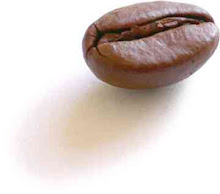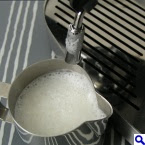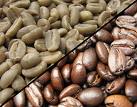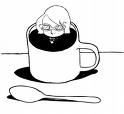Total Dissolved Solids (TDS) are the total amount of mobile charged ions, including minerals, salts or metals dissolved in a given volume of water, expressed in units of mg per unit volume of water (mg/L), also referred to as parts per million (ppm). TDS is directly related to the purity and quality of water and water purification systems and affects everything that consumes, lives in, or uses water, whether organic or inorganic.
During the brewing of coffee and espresso, solids are extracted from the coffee grounds and can therefore be measured with a TDS meter. Depending on Brew Temperature, Extraction Time, Grind Coarseness, Amount of Coffee etc., the TDS value measured will vary. The monitoring of the TDS value will ensure consistent product quality!
Questions and Answers about TDS in water:
What Are Total Dissolved Solids?
1. "Dissolved solids" refer to any minerals, salts, metals, cations or anions dissolved in water. This includes anything present in water other than the pure water (H20) molecule and suspended solids. (Suspended solids are any particles/substances that are neither dissolved nor settled in the water, such as wood pulp.)
2. In general, the total dissolved solids concentration is the sum of the cations (positively charged) and anions (negatively charged) ions in the water.
3. Parts per Million (ppm) is the weight-to-weight ratio of any ion to water.
4. TDS is based on the electrical conductivity (EC) of water. Pure H20 has virtually zero conductivity. Conductivity is usually about 100 times the total cations or anions expressed as equivalents. TDS is calculated by converting the EC by a factor of 0.5 to 1.0 times the EC, depending upon the levels. Typically, the higher the level of EC, the higher the conversion factor to determine the TDS.
Where do Dissolved Solids come from?
1. Some dissolved solids come from organic sources such as leaves, silt, plankton, and industrial waste and sewage. Other sources come from runoff from urban areas, road salts used on street during the winter, and fertilizers and pesticides used on lawns and farms.
2. Dissolved solids also come from inorganic materials such as rocks and air that may contain calcium bicarbonate, nitrogen, iron phosphorous, sulfur, and other minerals. Many of these materials form salts, which are compounds that contain both a metal and a nonmetal. Salts usually dissolve in water forming ions. Ions are particles that have a positive or negative charge.
3. Water may also pick up metals such as lead or copper as they travel through pipes used to distribute water to consumers.
4. Note that the efficacy of water purifications systems in removing total dissolved solids will be reduced over time, so it is highly recommended to monitor the quality of a filter or membrane and replace them when required.
Why Should You Measure the TDS level in your Water?
The EPA Secondary Regulations advise a maximum contamination level(MCL) of 500mg/liter (500 parts per million (ppm)) for TDS. Numerous water supplies exceed this level. When TDS levels exceed 1000mg/L it is generally considered unfit for human consumption. A high level of TDS is an indicator of potential concerns, and warrants further investigation. Most often, high levels of TDS are caused by the presence of potassium, chlorides and sodium. These ions have little or no short-term effects, but toxic ions (lead arsenic, cadmium, nitrate and others) may also be dissolved in the water.
Even the best water purification systems on the market require monitoring for TDS to ensure the filters and/or membranes are effectively removing unwanted particles and bacteria from your water.
The following are reasons why it is helpful to constantly test for TDS:
1. Taste/Health High TDS results in undesirable taste which could be salty, bitter, or metallic. It could also indicate the presence of toxic minerals. The EPA's rescommended maximum of TDS in water is 500mg/L (500ppm).
2. Filter performance Test your water to make sure the reverse osmosis or other type of water filter or water purification system has a high rejection rate and know when to change your filter (or membrane) cartridges.
3. Hardness High TDS indicates Hard water, which causes scale buildup in pipes and valves, inhibiting performance.
4. Aquariums/Aquaculture A constant level of minerals is necessary for aquatic life. The water in an aquarium or tank should have the same levels of TDS and pH as the fish and reef's original habitat.
5. Hydroponics TDS is the best measurement of the nutrient concentration in a hydroponic solution.
6. Pools and Spas TDS levels must be monitored to prevent maintenance problems.
7. Commercial/Industrial High TDS levels could impede the functions of certain applications.
8. Colloidal Silver Water TDS levels must be controlled prior to making colloidal silver.






















